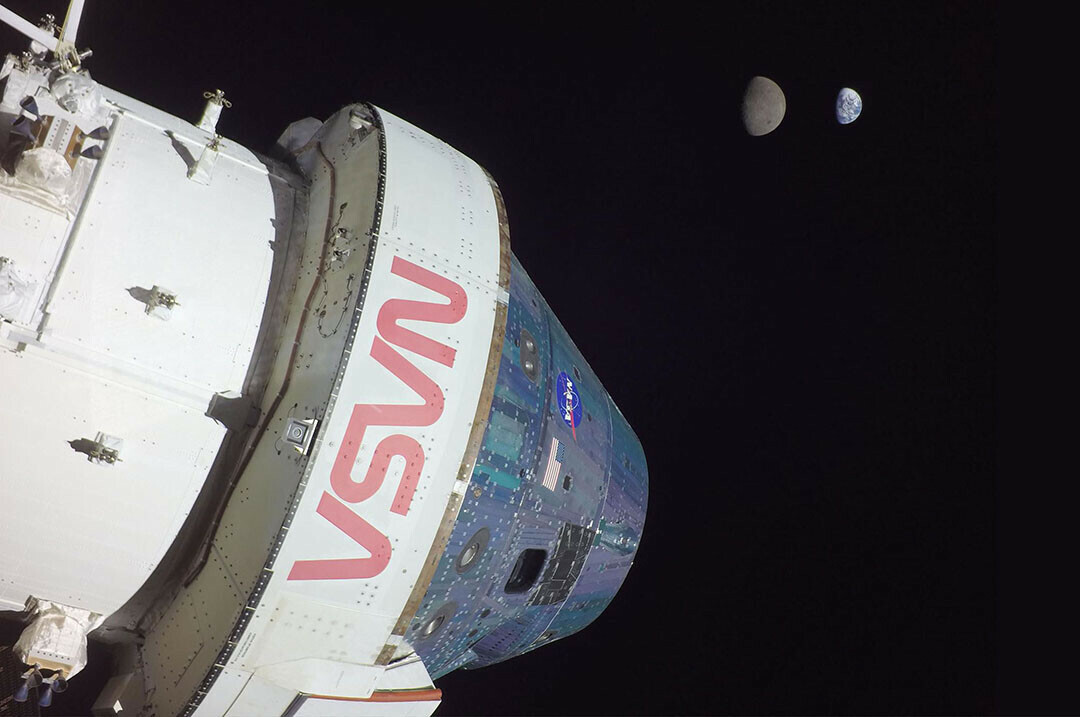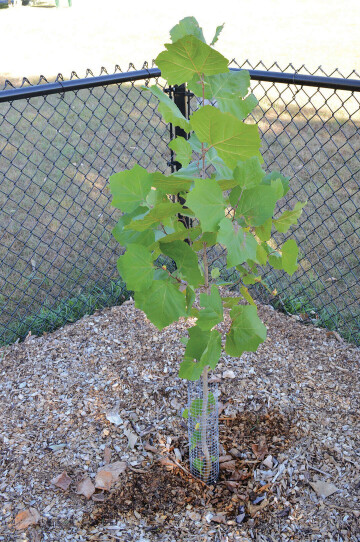TO THE MOON AND BACK: Menomonie Museum Dedicates Space-Faring ‘Moon Tree’
Rassbach Museum now home to tree grown from seed that traveled 270,000 miles

The latest attraction at the Rassbach Museum in Menomonie is literally out of this world – or at least is has been out of this world.
The Dunn County Historical Society’s museum is now the home of a slender visitor from outer space: a roughly 4-foot-tall sycamore tree grown from a seed that traveled around the Moon on an uncrewed space capsule in late 2022.
The “Moon Tree” is part of a NASA program which flew five species of tree seeds 270,000 miles from Earth on Artemis I, the first mission of a program that NASA hopes will bring astronauts back to the Moon within a few years. After the American sycamore, loblolly pine, sweetgum, giant sequoia, and Douglas fir seeds returned to Earth, they were germinated by the USDA Forest Service. Now, NASA has begun distributing them to museums, schools, universities, and other institutions around the nation as part of a STEM engagement effort.

“We’re excited to bring a literal piece of spaceflight history to Dunn County,” said Melissa Kneeland, the historic society’s executive director. As soon as Kneeland learned about the Moon Tree program last winter she knew she had to apply. An important part of the process was creating a care plan to ensure the survival of the tree once it was planted, which Kneeland asked both the City of Menomonie and the regional Forest Service office to assist with.
“We’re excited to bring a literal piece of spaceflight history to Dunn County.”
The tiny, leafless tree arrived and was planted outside the museum in early June, and in the ensuing months it has grown taller and sprouted foliage. The Moon Tree is now protected by a 5-foot-by-5-foot fence, donated by HS Fence of Fall Creek.

The tree was officially dedicated during an Oct. 5 ribbon cutting that featured space-themed snacks such as Tang and Moon Pies. Kneeland noted that grant funding will pay for an outdoor display explaining the significance of the Moon Tree, a telescope that will be used during future Moon-watching nights, and rocket-themed educational materials that will be used in conjunction with Fulton’s Workshop, an exhibit and makerspace in the museum.
And, as if one interstellar feature wasn’t enough, tree was planted near a Solar Victory Garden, an array of solar panels that was installed last year.
“It’s a really great way of adding the cosmos to our lexicon of education materials,” Kneeland said.
The Moon Tree program is a revival of a similar effort undertaken in the early 1970s, when astronaut Stuart Roosa carried seeds on the Apollo 14 lunar mission. A half century later, scores of this first generation of Moon Trees still thrive around the nation and world.
With some luck, the Rassbach Museum’s sycamore will also have a long, healthy life, continually extending toward the heavens.
“One of the things I said in our presentation is we’re proud to tell the stories of Dunn County History and preserve them, but we’re also proud to make history,” Kneeland said.
Learn more about the Rassbach Museum at dunnhistory.org.


